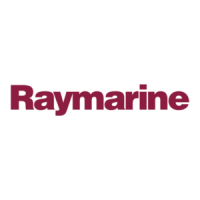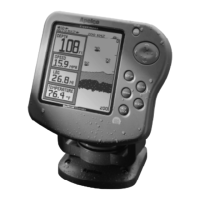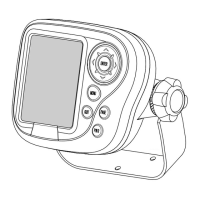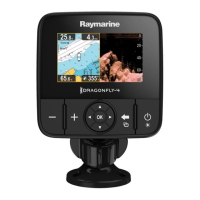
Do you have a question about the Raymarine FishFinder L265 and is the answer not in the manual?
| Brand | Raymarine |
|---|---|
| Model | FishFinder L265 |
| Category | Fish Finder |
| Language | English |
Overview of the FishFinder L265 system, its components, and capabilities.
Details standard equipment, transducers, and optional accessories for the FishFinder L265.
Explains transducer importance, types, and selection criteria.
Instructions for correctly assembling the transducer bracket for mounting.
Guidelines for selecting the optimal location for mounting a transom-mount transducer.
Step-by-step instructions for securely mounting the transom-mount transducer.
Instructions for installing the Sidelooker transducer for side-view sonar capabilities.
Key considerations for installing thru-hull and low-profile transducers.
Guidance for installing in-hull transducers.
Guidance for installing transducers on a trolling motor.
Steps for mounting the display unit using the standard bracket.
Instructions for flush-mounting the display unit into a panel or dashboard.
Explanation of the buttons and functions on the FishFinder L265 display unit.
Procedures for turning the FishFinder unit on, off, and accessing the Lamp/Contrast menu.
How the unit saves settings and uses factory default values.
How to adjust display brightness and contrast using the Lamp/Contrast menu.
How to switch between different display modes like FishFinder, Zoom, and A-Scope.
Overview of the available display modes and their functions.
Detailed explanation of the standard FishFinder display, its components, and operation.
Explains the use of 50 kHz and 200 kHz frequencies for optimal sonar performance.
Guidance on understanding fish symbols, arches, and their meanings on the display.
How to interpret different bottom conditions like hard, soft, or rocky bottoms.
Introduction to special display modes like Zoom and A-Scope for enhanced data viewing.
How to use the Zoom page to magnify specific areas of the sonar display.
Understanding the A-Scope page for real-time sonar data and bottom structure.
Using the Digital page for a clear, numerical display of water depth.
Explanation of the Sidelooker page for viewing underwater structure to the sides of the boat.
How to access and move through the various setup options.
How to configure the depth range for automatic or manual selection.
Instructions for setting sensitivity for optimal fish and bottom detection.
How to adjust the speed at which data scrolls on the display for better detail.
How to set zoom levels and select the area to magnify on the display.
How to select between 50 kHz, 200 kHz, or dual frequencies for sonar operation.
Overview of the System Setup menu items for configuring various unit functions.
How to use the simulator mode and configure fish symbol display options.
How to configure the White Line feature and enable the Sidelooker function.
Configuration for shallow and deep water alarms with operational details.
Configuration for fish alarms and the unit's buzzer behavior.
Setting the display units for depth measurements (feet, fathoms, meters).
Specific setup steps required when the Sidelooker transducer is installed.
How to restore all unit settings to their original factory default values.
A list of the default settings for the FishFinder unit.
Guidelines for cleaning and maintaining the FishFinder display, cables, and transducer.
Solutions for common problems like the unit not turning on.
Solutions for common problems where the display unit freezes temporarily or permanently.
How to resolve issues with the unit not seeing the bottom/fish or display inaccuracies.
Addresses problems related to display unreliability at high speeds or excessive background noise.
Information on contacting Raymarine for product support, parts, and repair services.
Technical details and physical characteristics of the FishFinder L265.
Lists key functions, ranges, and operational parameters of the FishFinder.
Visual representation of the unit's connectors and their pin assignments.
Definitions of common nautical terms and technical jargon used in the manual.
Information on warranty coverage, limitations, and terms for Raymarine products.
Contact and location details for Raymarine's service centers worldwide.











